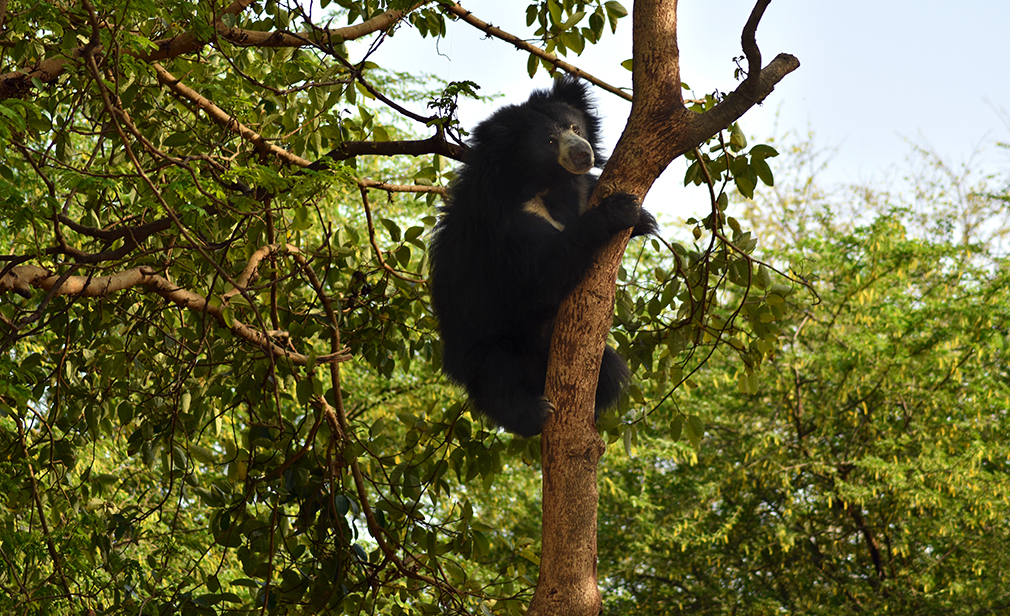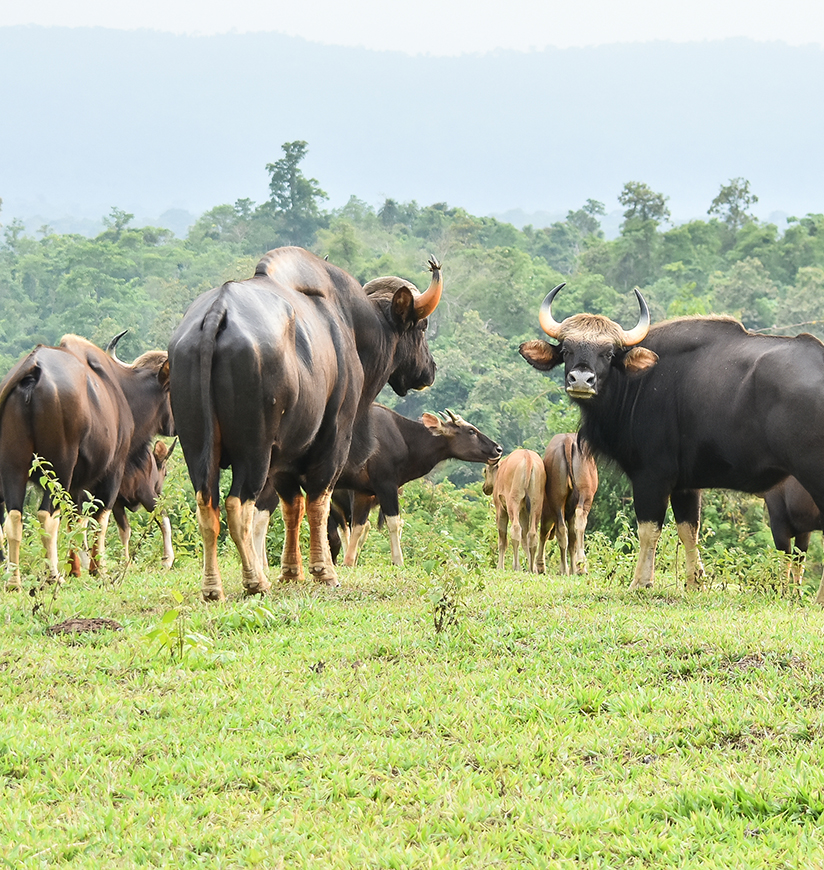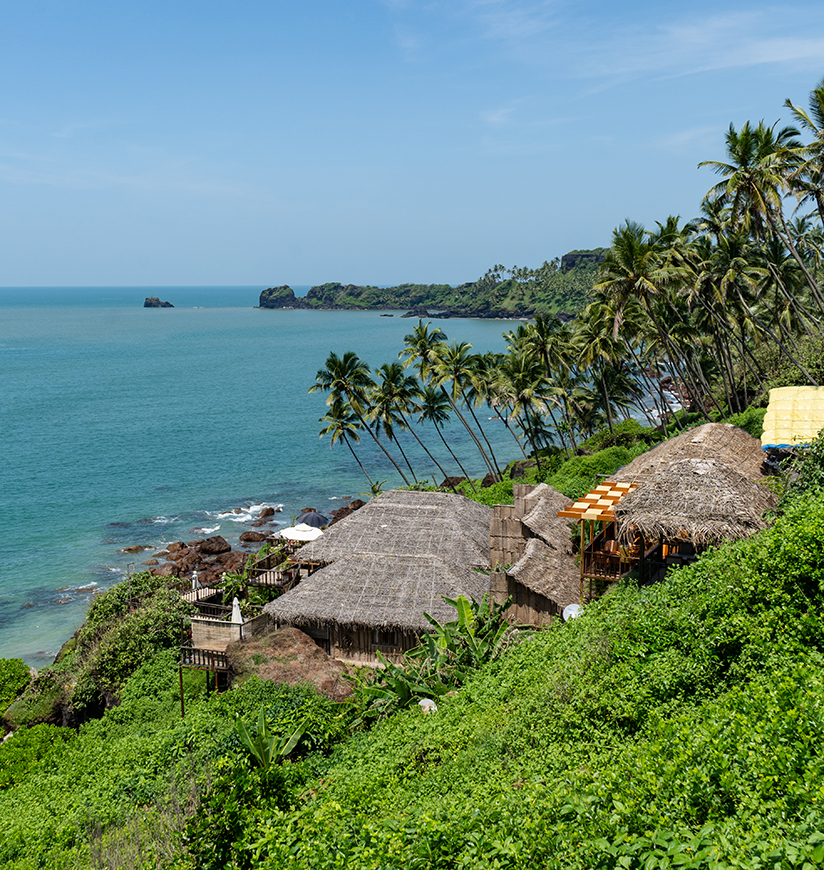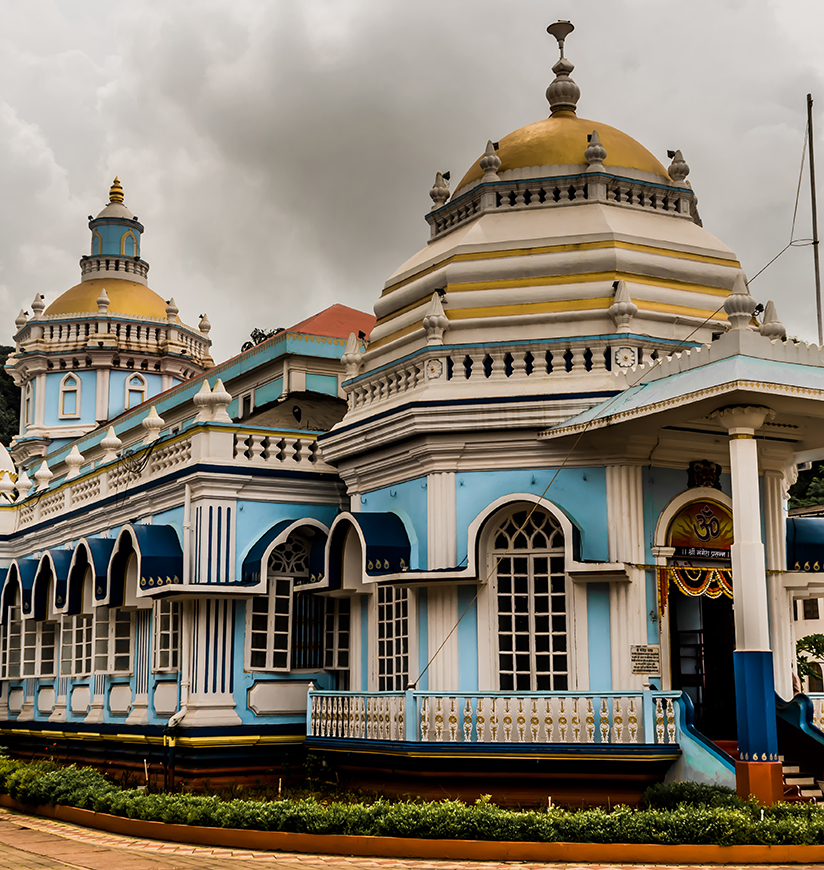A monsoon wonderland
If you're a monsoon lover, Cotigao should be at the top of your travel list. The Kuskem waterfalls, located in the Mhadei Forest Reserve, turn into a mesmerising cascade during the monsoon season, attracting thousands of tourists. The sight and sound of the water gushing down the rocky cliffs are truly awe-inspiring. Cotigao's unique geography, with its hills and valleys, enhances the monsoon experience, making it a monsoon destination like no other.
The rare species at wildlife sanctuary
The Cotigao Wildlife Sanctuary is a remarkable hub of biodiversity. The sanctuary is home to some remarkable creatures, including the elusive black leopard, which is known for its striking black coat, and the reclusive sloth bear, a fascinating creature that dwells in the depths of the forest.
The sanctuary boasts of painted bats, which adds a touch of nocturnal mystique to its fauna. Bird enthusiasts will be delighted to spot the Indian pied hornbill and the larger golden-backed woodpecker at the sanctuary. The peaceful Cotigao River offers an ideal location for a picnic.
Trek to a Kuskem waterfall in the jungle
Kuskem Waterfalls, located in the beautiful region of Goa, India, is a true paradise for those who appreciate the wonders of nature. These falls are situated in close proximity to the Cotigao Wildlife Sanctuary, providing a tranquil and pristine atmosphere. Located amidst abundant greenery, the flowing waters form a breathtaking scene, rendering it a perfect location for unwinding and capturing stunning photographs. The area is not very crowded, which means visitors can enjoy the peaceful atmosphere and take refreshing swims in the clear pool below the waterfalls. Adding a short trek through the forest enhances the adventurous aspect of the visit. The Kuskem Waterfalls offer an ideal getaway for individuals in search of a serene and untouched sanctuary amidst the wilderness of Goa.
The natural wonder of Goa : Butterfly Park
The Butterfly Park in Cotigao Wildlife Sanctuary, is a mesmerising sanctuary that attracts butterfly enthusiasts and nature lovers alike. This sanctuary is a delightful spot for visitors of all ages, as it is home to a diverse range of butterfly species. The park provides a peaceful and vibrant setting, creating a natural home for these beautiful creatures. As you take a leisurely walk through the park, you will be captivated by the enchanting display of butterflies in a multitude of sizes and colours. They gracefully flutter amidst the vibrant foliage and blooming flowers, creating a truly mesmerising sight. Not only is it visually captivating, but it also offers an educational experience that allows you to gain knowledge about these captivating insects and their vital role in the ecosystem.
Mallikarjun temple, a must-see destination
The Mallikarjun Temple in Cotigao, located in South Goa, is a truly enchanting destination. Nestled amidst breathtaking valleys and verdant forests, this temple is a hidden gem waiting to be discovered. This wonder from the 16th century stands out from the busy tourist attractions in Goa. The temple is dedicated to Lord Mallikarjun, who is an incarnation of Lord Shiva. It is home to more than 60 deities and features ancient carvings that depict scenes from the Puranas and Mahabharata. This place holds great spiritual and historical importance. The temple hosts a variety of religious festivals throughout the year, attracting devotees not just from Goa but also from the neighbouring state of Karnataka. The Mallikarjun Temple is a must-see destination for travellers seeking a tranquil and spiritually enriching experience. It offers a unique blend of natural beauty and cultural heritage, making it a perfect place to visit.
Richest jaggery in the region
The production of jaggery in Cotigao, South Goa, is a longstanding tradition that holds deep roots in the local culture. Enner with a rich, caramel-like flavour, the jaggery produced in this region serves not only as a sweetener in local dishes, but also carries cultural significance. It is often used as an offering in religious ceremonies and rituals. On visiting Cotigao during the jaggery production season, you have the chance to witness this traditional craft, learn about the process, and enjoy the authentic, homemade jaggery. This sweet treat is deeply rooted in Goa's cultural heritage.
Meet villagers at the stone circles of neolithic period
Neolithic stone circles which spanned from approximately 10,200 BC to 2,000 BC can be in Cotigao. Found in various parts of the world, including Europe, Africa, and Asia, are extensive and intricate. Archaeologists and historians engage in ongoing debates regarding the purpose of these stone circles. You can witness the villagers assemble at these stone circles for community decision making.
Economic sustainability
Cotigao is part of the Goa Tourism Department's "Tourist Villages Development Scheme, 2021" to promote economic sustainability. You can visit the tribal market that displays local products and cultural heritage during the annual Lokotsav event. Cotigao emphasises social inclusion by involving women's self-help groups in jaggery production and supporting women entrepreneurship initiatives. This promotes local economic growth, reduces reliance on distant markets, and fosters inclusive economic progress.
A journey of rich cultural heritage
Cotigao is home to a plethora of historical sites that have the power to transport you back in time. The Cabo de Rama Fort, situated atop a cliff, provides awe-inspiring panoramic vistas of the Arabian Sea. St. Anthony's Church is a centuries-old architectural marvel. The heritage places in Cotigao are more than just landmarks. They are living relics that embody the storied past of the city. These places invite you to delve into its history and immerse yourself in the echoes of a bygone era.
Best time to visit
The best time to visit Cotigao is during the monsoon season, which typically spans from June to September. This period allows you to witness the lush greenery, flowing waterfalls, and vibrant wildlife in all their glory. However, if you prefer a drier and more comfortable climate, consider visiting during the post-monsoon months from October to February for a more pleasant and relaxed experience.


















































